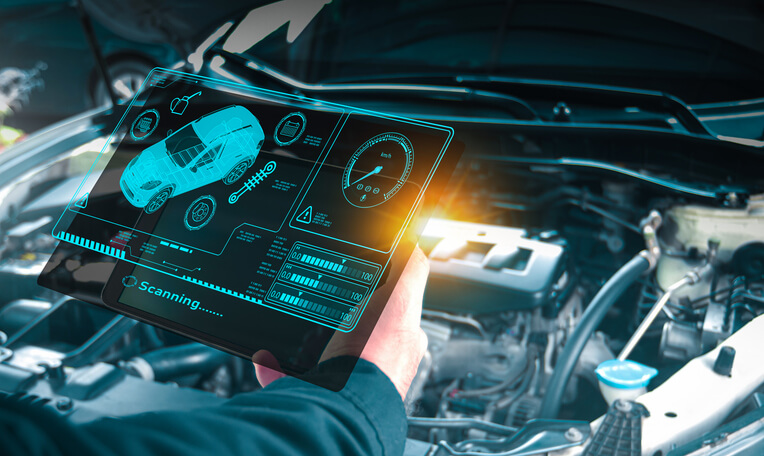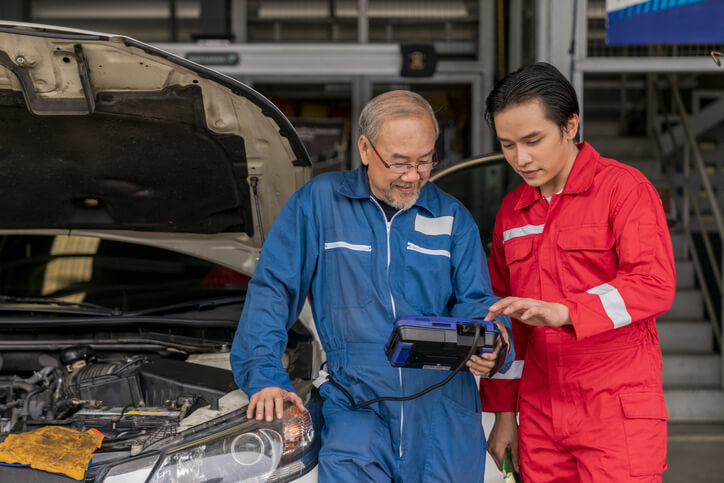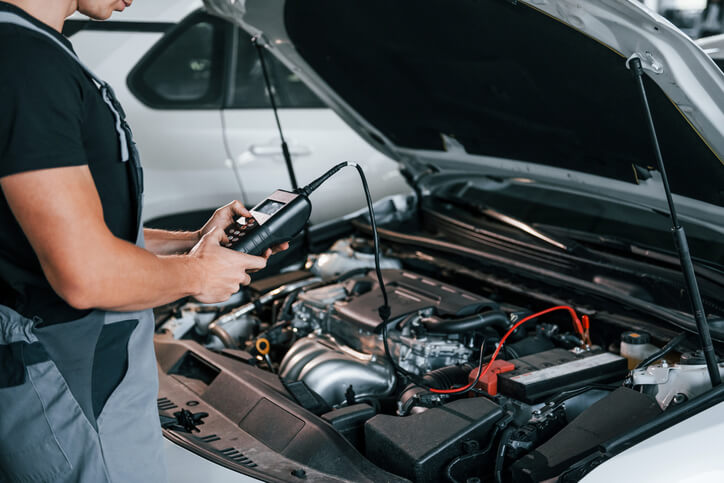Tools of Tomorrow: What CATI Students Learn About Smart Vehicle Diagnostics
Modern cars are now mobile computers. With advanced sensors, onboard computers, and connected systems, diagnosing problems requires much more than a wrench and a keen ear. That’s why students in auto mechanic training at CATI learn how to use cutting-edge diagnostic tools designed for today’s smart vehicles.
As technology continues to transform the automotive industry, smart diagnostics give technicians the ability to identify issues faster, improve accuracy, and deliver better service. At CATI, students don’t just study theory. They get hands-on experience with the same tools used in professional repair shops and dealerships.
Here’s a closer look at the smart diagnostic systems students explore during automotive training at CATI.
Advanced Onboard Diagnostics (OBD-II)
One of the first tools students master is the OBD-II scanner. Every vehicle built since the mid-1990s includes an onboard diagnostics system that stores data about performance and malfunctions.
With OBD-II scanners, technicians can:
- Retrieve diagnostic trouble codes (DTCs).
- Monitor live data like fuel efficiency, emissions, and sensor performance.
- Reset warning lights after repairs.
At CATI, students learn how to interpret these codes, troubleshoot the root cause of issues, and use the data to create accurate repair plans. This skill is crucial for working on vehicles that rely on advanced electronics.

Digital Multimeters and Electrical Testing
Since today’s vehicles run on complex electrical systems, students also practice using digital multimeters. These tools help measure voltage, resistance, and current across different components.
By learning electrical testing, CATI students can:
- Identify battery health and charging system issues.
- Diagnose wiring or sensor malfunctions.
- Confirm proper connections after repairs.
Mastering electrical diagnostics ensures that graduates can work confidently on hybrid, electric, and computer-driven vehicles.
Manufacturer-Specific Diagnostic Software
Many automakers now provide proprietary diagnostic programs tailored to their vehicles. These platforms give technicians access to in-depth information not available through generic scanners.
During automotive training, students are introduced to how manufacturer tools operate, including:
- Running guided diagnostic procedures.
- Accessing repair manuals and wiring diagrams.
- Performing software updates on vehicle systems.
By practicing with these platforms, graduates are better prepared to work in dealerships and specialized repair shops where brand-specific knowledge is required.

Connected Vehicle Data and Telematics
The next frontier in diagnostics involves connected vehicles. With telematics, cars can transmit performance data directly to repair shops in real time. This allows technicians to anticipate issues before they become serious problems.
Students at CATI explore how telematics systems are shaping the future of diagnostics. Understanding how to work with connected car data prepares them for careers where preventive maintenance and predictive analytics are becoming the industry standard.
Why Smart Diagnostics Matter for Auto Mechanic Training Students
As cars get smarter, so must the technicians who repair them. By focusing on smart vehicle diagnostics, CATI ensures that students are job-ready and capable of handling the challenges of modern automotive technology.
For aspiring auto techs, mastering smart diagnostic tools is about more than fixing cars, it’s about staying relevant in a rapidly evolving industry. Employers seek technicians who can handle both traditional repairs and modern, computer-driven systems.
Through auto mechanic training at CATI, students build the technical expertise, problem-solving skills, and confidence needed to thrive in today’s job market. By graduation, they’re not just learning how to repair vehicles; they’re preparing to support the next generation of smart, connected cars.
If you’re ready to train with advanced tools, gain hands-on experience, and launch your career, consider enrolling at CATI. With the right automotive training, you’ll be prepared to tackle the tools of tomorrow and secure your place in a growing industry.
Do you want to explore programs at CATI school?
Contact us for more information.

